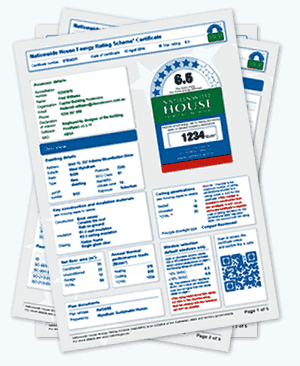Does My Building Need To Be Assessed for Energy Efficiency?
- Clyde Anderson
- Jul, 10, 2023
- Uncategorized
- Comments Off on Does My Building Need To Be Assessed for Energy Efficiency?
Building Application is just around the corner and the council has given you a list of forms to obtain to ensure your project complies with the National Construction Code (NCC). Energy efficiency compliance is on that list, but “does my building really need an energy efficiency assessment”?
According to the NCC, all new buildings and extensions must meet energy efficiency standards. However, it’s not always straightforward what requires Section J compliance.
Keep reading as we cover the common building scenarios that will and won’t require an energy efficiency assessment.
When is an Energy Efficiency Assessment required?
There are a few instances when you will need your building assessed for energy efficiency.
- Building application – Every new building must go through building application, and in most cases will require a Form 15 (for commercial buildings and residential buildings using Deemed-to-Satisfy) or a Universal Certificate (for residential buildings using Star Rating) to pass.
- Increasing floor area – Any additions to habitable spaces, such as adding an extension or enlarging a room, will trigger the need for energy efficiency assessment.
- Converting a non-habitable space to a habitable space – For example, fitting out a storage shed with an office, transforming a balcony into a bedroom, or converting the sun-room into an open plan living space.
- Changing building classification for whole or part of the building – For instance, changing an office into a retail space (class 5 to class 6), or converting a garage into a bedroom (class 10a to class 1a).
- Moving/relocating a building – Relocating a building requires assessment due to various factors, such as changes in climate zones and orientation.
- Replacing a roof on an existing habitable space
When you might not need an Energy Efficiency Assessment?
Always consult your building certifier if an assessment is required, but there are instances where it may not be necessary.
For example, swapping existing building elements with elements of the same type may not trigger an energy efficiency assessment. Certain changes may impact the whole building’s operational energy consumption but are not significant enough changes to warrant an assessment.
Examples of these changes are:
- Changing roof or wall colours
- Changing floor coverings (note that changing from wooden floors to carpet may change the outcome of a Star Rating)
- Changing window coverings (e.g. blinds, curtains and awnings)
- Tinting windows
- Exchanging glazing of the same size (changing from lower spec to higher spec – changing higher to lower spec may require assessment)
- Improving shade
- Swapping room use (e.g., converting a bedroom to a study – as mentioned above, converting non-habitable to habitable requires assessment)
- Adding insulation (without modifying the building design to accommodate insulation)
- Adding solar panels
- Building a shed
When does a temperature-controlled space require an Energy Efficiency Assessment?
To understand what a temperature-controlled space is, let’s take a look at the related definitions provided by the NCC.
What is a “Conditioned Space”?
In Volume 1, the NCC defines “conditioned space” as a space within a building where the environment is likely (by the intended use of the space) to have its temperature controlled by air-conditioning. This includes a ceiling or under-floor supply air plenum or return air plenum.
Similarly, Volume 2 of the NCC defines a “conditioned space” as a space within a building that is heated or cooled by the building’s domestic services. However, this excludes non-habitable rooms with heaters not exceeding a capacity of 1.2 kW or 4.3 MJ/hour.
What is “Air-Conditioning”?
As per Volume 1 of the NCC, “air-conditioning” refers to a service that actively cools or heats the air within a space. However, it does not include a service that directly
(a) cools or heats cold or hot rooms; or
(b) maintains specialised conditions for equipment or processes, where this is the main use of the service.
So what does this mean for temperature controlled spaces?
If the main use of indoor temperature control is to maintain temperature or humidity for a product, process or equipment, then the air-conditioning is considered a “service”.
This can include humidity control to reduce condensation risk on cool internal surfaces. The humidity is set to such a low level that the long-term human use of the space may be detrimental to health.
Another example is when the temperature and/or humidity is controlled to promote growth of a product or minimise product degradation.
The aim of an energy efficiency assessment is to assess a building for human comfort. Although a building or a room may be conditioned it may not need an assessment depending on its intended use. If the space is not primarily meant for accommodating humans, an assessment is not necessary.
Conclusion
Determining whether you need an energy efficiency assessment or not depends on the nature of your project. If you’re building a brand new building, an assessment for compliance is generally required. Additionally most renovations, refurbishments, or fit-outs will also need an assessment, with the depth of the assessment varying based on the extent of planned works.
If you’re looking to chat further about this article, or seeking professional advice and expertise for an energy efficiency assessment, contact us for a free quote!

